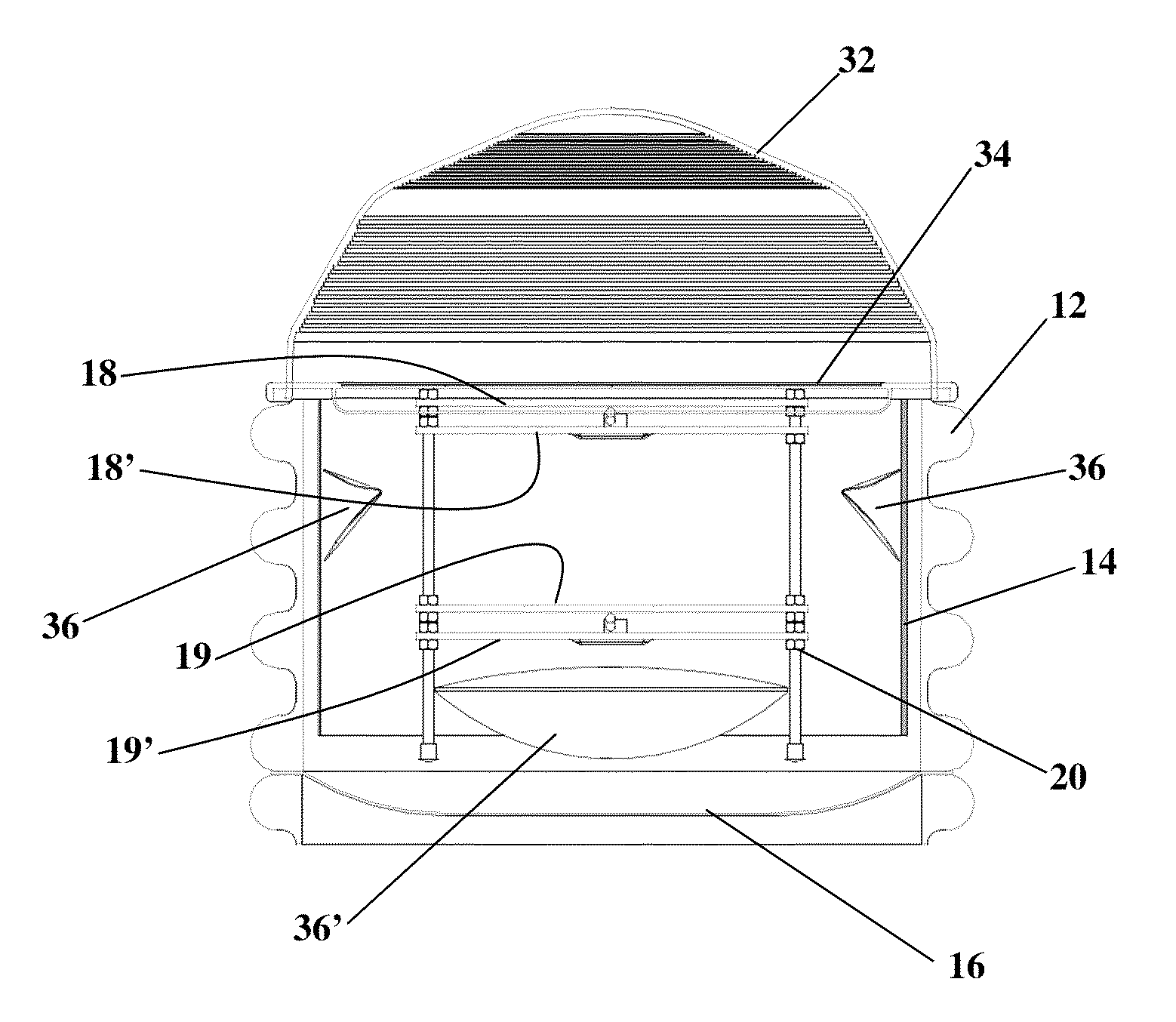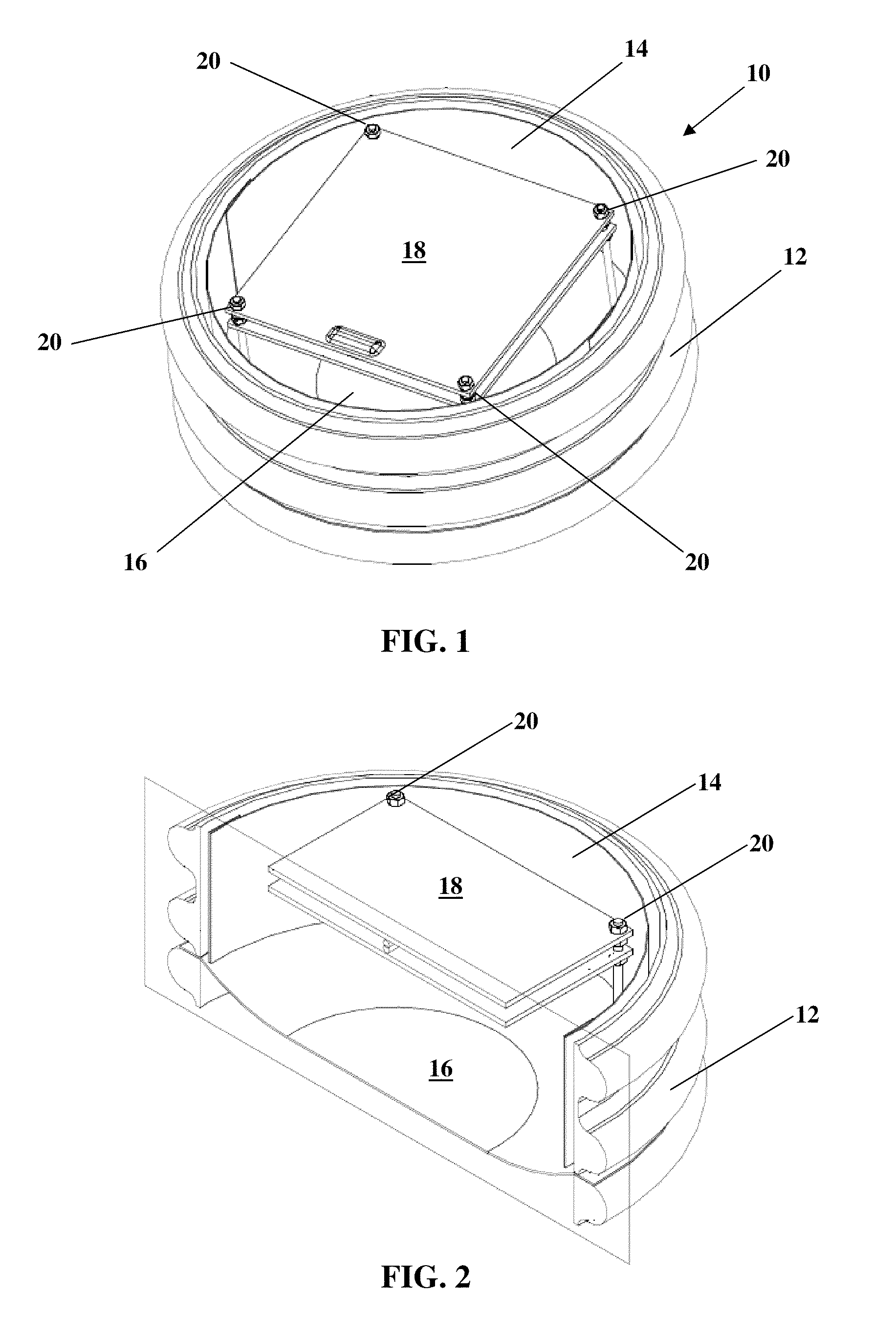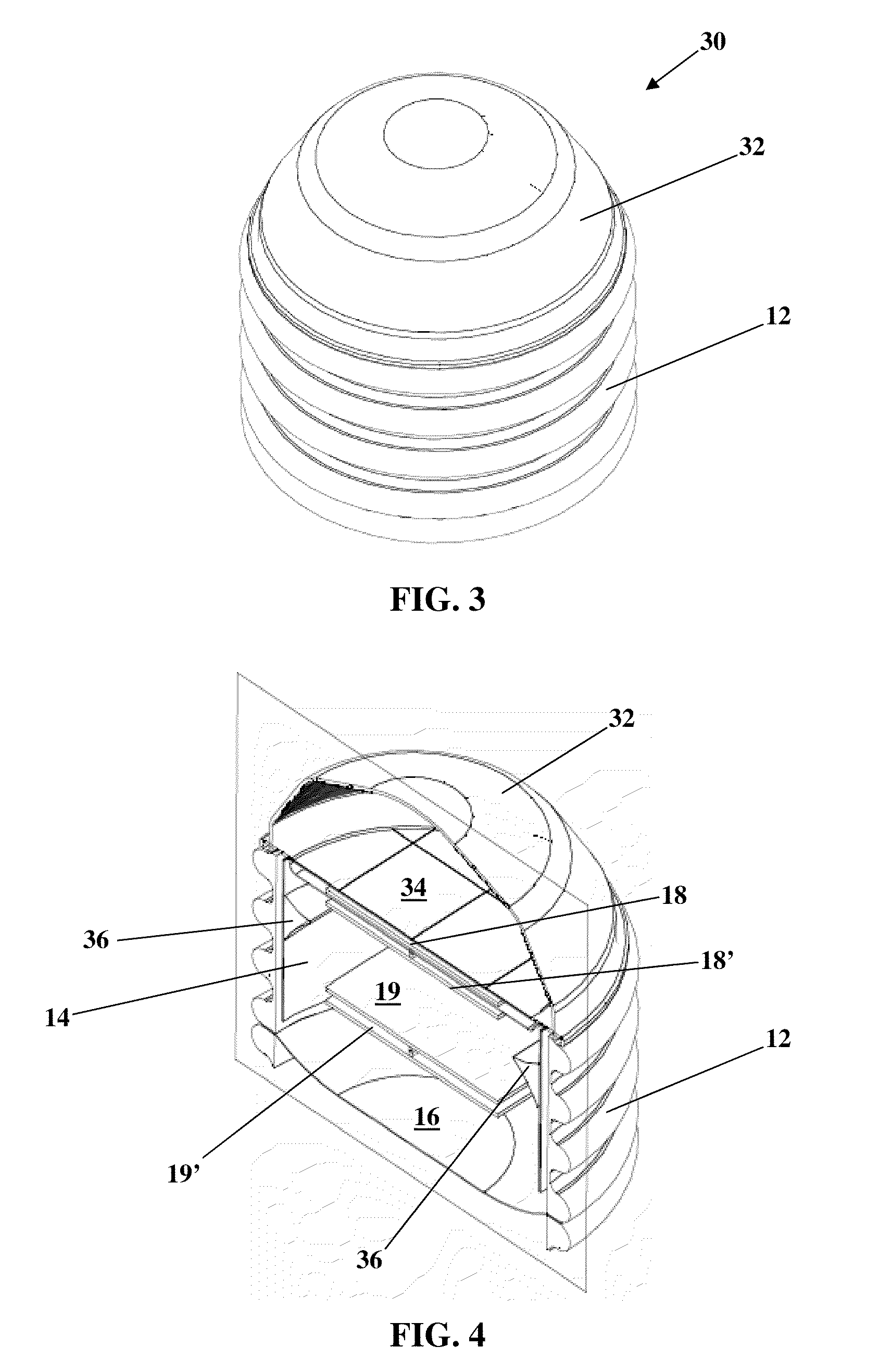Multiplexing solar light chamber
a solar light chamber and multi-layer technology, applied in the field of concentrating photovoltaic systems, can solve the problems that the intrinsic photovoltaic efficiency cannot improve indefinitely, and achieve the effect of improving the net generation of electricity, increasing the photovoltaic efficiency, and increasing the efficiency of photovoltaic energy
- Summary
- Abstract
- Description
- Claims
- Application Information
AI Technical Summary
Benefits of technology
Problems solved by technology
Method used
Image
Examples
Embodiment Construction
[0050]At the heart of the present device is a concentrating photovoltaic system that is compact, cost-effective, modular, efficient, and decreases the need for large-area solar array installations and multiple solar trackers. The device generates more electricity per area of active photovoltaic surface (and per overall unit area) than conventional solar arrays.
[0051]Throughout all of the drawing figures, the same reference numerals refer to the same or analogous elements of the device. Referring now to FIGS. 1 and 2, these two figures illustrate a first version 10 of the invention. FIG. 1 is a perspective view of the first version of the device, and FIG. 2 is a vertical cross-sectional view of the rendering shown in FIG. 1. A cylindrical housing or case 12 having inner and outer surfaces and top and bottom faces encloses at least one solar panel 18. A circumferential sidewall reflector 14 is disposed on or proximate to the inner surface of the housing. Preferably, the sidewall refle...
PUM
 Login to View More
Login to View More Abstract
Description
Claims
Application Information
 Login to View More
Login to View More - R&D
- Intellectual Property
- Life Sciences
- Materials
- Tech Scout
- Unparalleled Data Quality
- Higher Quality Content
- 60% Fewer Hallucinations
Browse by: Latest US Patents, China's latest patents, Technical Efficacy Thesaurus, Application Domain, Technology Topic, Popular Technical Reports.
© 2025 PatSnap. All rights reserved.Legal|Privacy policy|Modern Slavery Act Transparency Statement|Sitemap|About US| Contact US: help@patsnap.com



